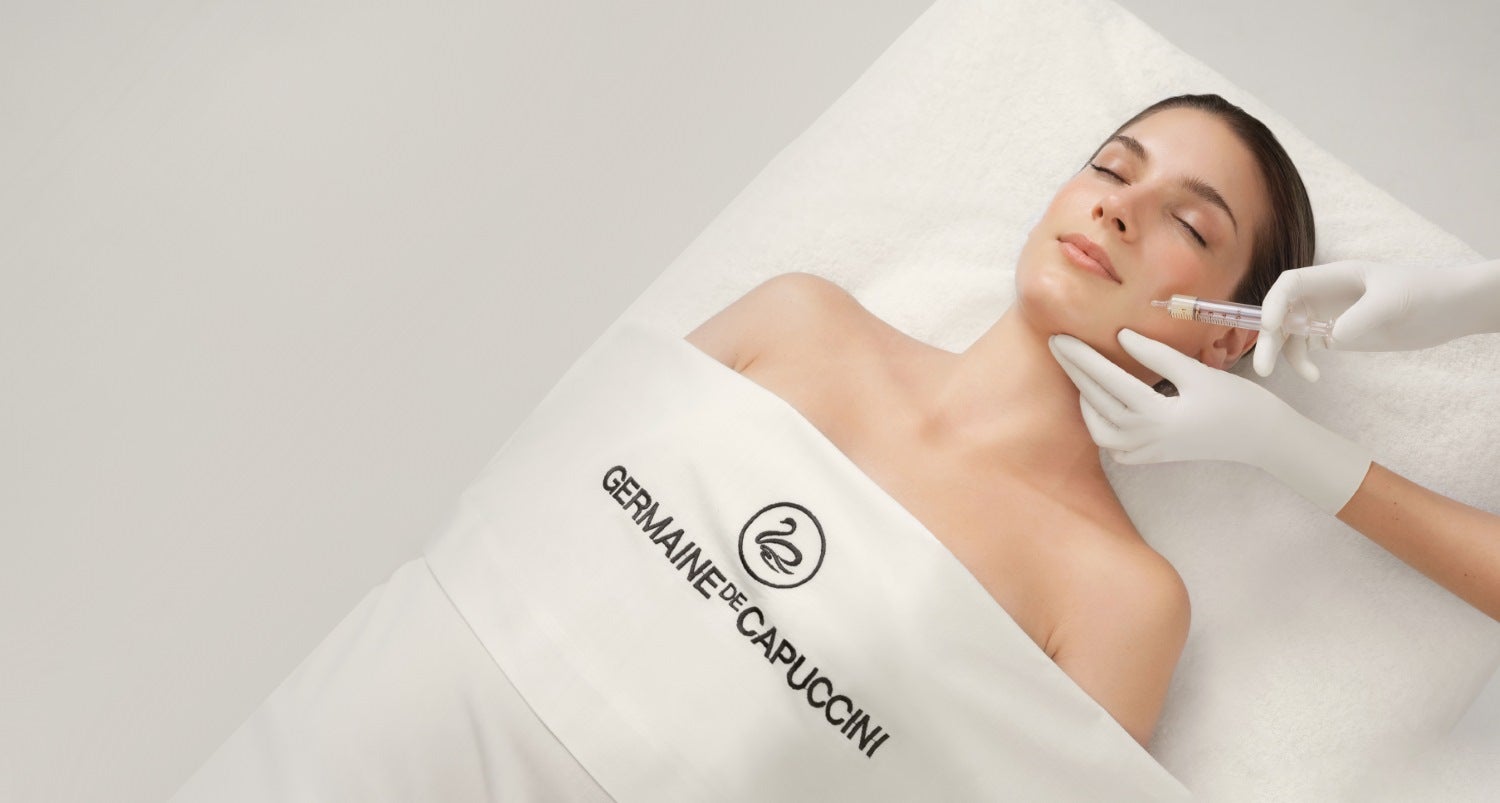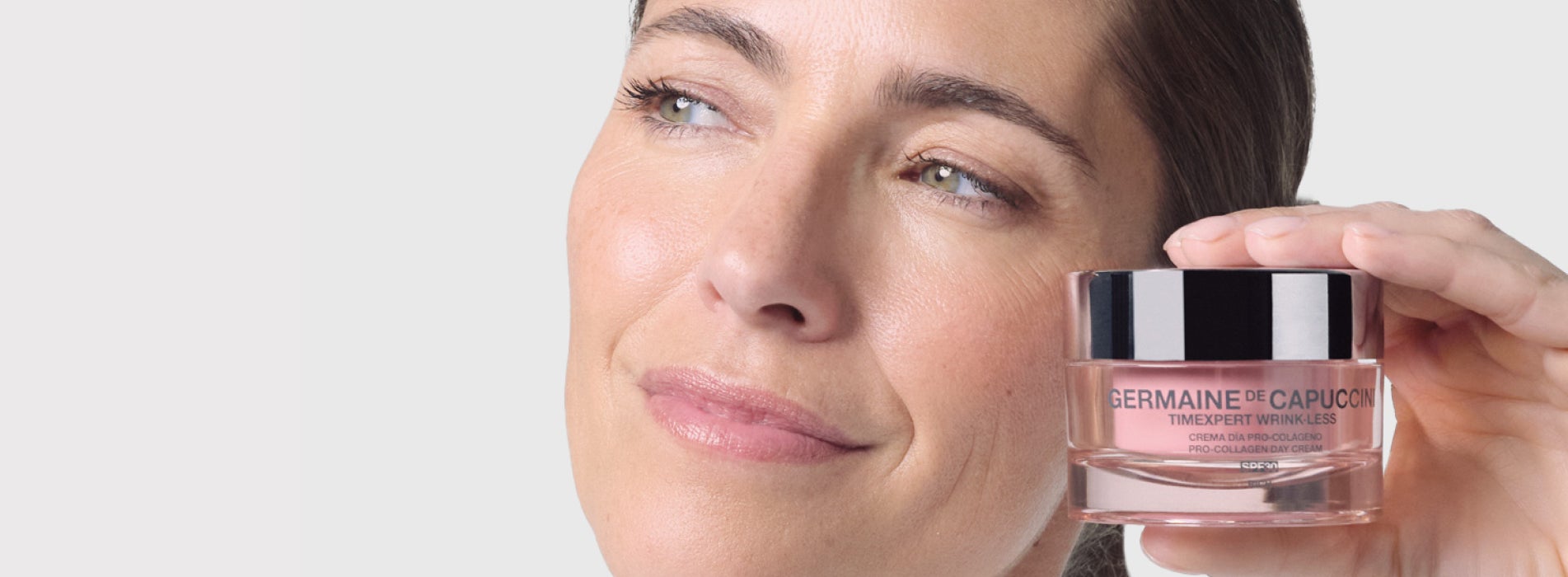Types of Facial Spots: Causes and How to Treat Them

Facial spots are one of the most common aesthetic concerns, especially after the age of 30. Whether brown, white, red, or pink, these marks can have different causes and require specific treatments. In this post, we help you identify the most common types of facial spots, their causes, and how to effectively treat them to restore your skin's radiance and even tone.
Causes of Facial Spots
Understanding the root causes of facial spots is essential for both prevention and treatment. These are the most common triggers:
Excessive sun exposure: UV radiation is the leading cause of hyperpigmentation. It damages skin cells and triggers the overproduction of melanin.
Hormonal changes: Melasma, for instance, often appears during pregnancy or menopause, and can also result from using certain medications.
Skin ageing: As skin ages, its natural renewal process slows down. This allows pigmentation to accumulate, resulting in visible spots.
Genetics: Some individuals are genetically predisposed to developing uneven skin tone or pigmentation disorders.
Post-inflammatory pigmentation: Conditions such as acne, eczema, or even aggressive cosmetic procedures can lead to lingering dark or red spots.
Harsh cosmetics or perfumed products: These can irritate the skin and increase sensitivity to sunlight, triggering new spots.
Types of Facial Spots
Not all facial spots are the same. Identifying the type is crucial for choosing the most effective treatment.
Brown or Sun Spots
Also known as age spots or solar lentigines, these are among the most common. They appear in areas frequently exposed to the sun such as the forehead, cheeks, and nose. Their intensity increases with age and unprotected sun exposure. A routine combining exfoliation, depigmenting actives, and daily sunscreen can visibly reduce their appearance over time.
White Spots
White spots on the face usually stem from a loss of melanin. These may result from hypomelanosis guttata (linked to ageing), fungal infections, or significant sun damage. Though not always reversible, these spots can fade with skincare that boosts cell turnover and evens out skin tone. A recommended option is the Glycocure Intense Renewal Exfoliating Mask.
Red or Pink Spots
Often linked to inflammation, red or pink spots may be caused by rosacea, couperose, or even post-acne healing. These marks can persist and worsen without proper care. The best approach includes using calming ingredients, sun protection, and barrier-repairing skincare. The Intensive Relief Expert Lab is ideal for restoring skin comfort and reducing visible redness.
How to Prevent Facial Spots
Prevention is key when it comes to maintaining clear, even-toned skin. Incorporate the following habits into your daily skincare routine:
Use SPF 50+ daily: Regardless of the weather, protecting your skin from UV rays is essential. Daily Hi-Defense Dry Touch SPF50 offers effective protection without greasiness, ideal even for oily or combination skin.
Avoid sun exposure during peak hours (12:00–16:00): During this time, UV radiation is at its strongest. Stay in the shade or wear a hat and sunglasses.
Include antioxidants in your skincare: Ingredients like vitamin C, ferulic acid, and niacinamide neutralise free radicals and prevent oxidative stress-related pigmentation.
Tailor your skincare to the type of spot: Use specific treatments depending on whether you have red, brown, or white spots. The Expert Lab line is formulated with high-performance actives for targeted care.
Don’t touch blemishes: Picking or scratching spots increases the risk of post-inflammatory marks.
Stick to a consistent cleansing routine: Proper facial hygiene removes impurities that could irritate the skin and trigger spots. Choose a gentle, barrier-friendly cleanser.
Seek expert advice when needed: For persistent or recurrent pigmentation, consulting a skincare professional can help you find the most effective solution.
Products to Treat Facial Spots
Germaine de Capuccini's Expert Lab collection is designed to treat all types of pigmentation issues with proven cosmetic science. The line includes a variety of solutions tailored to different needs:
Pigment Therapy Home Pack: Designed for stubborn dark spots, this intensive treatment visibly reduces discolouration with continued use.
Retinight Expert Lab: A retinol-based night treatment that supports skin renewal, improves texture, and fades dark spots.
Glycocure Hydro-Retexturizing Activator Concentrate: Provides hydration while boosting skin cell turnover.
Collagen Peptide and Growth Factor: These help repair skin structure and prevent future pigmentation by enhancing cellular regeneration.
All Expert Lab products are developed with high-precision actives and dermatologically tested to ensure both safety and effectiveness for different skin types.
Frequently Asked Questions about Types of Facial Spots
What’s the best way to remove dark spots from the face?
A combination of gentle exfoliation, pigment-correcting actives like retinol or niacinamide, and consistent sun protection. The Pigment Therapy Home Pack is a complete protocol to treat stubborn spots.
What is the main cause of facial spots?
Unprotected sun exposure is the top cause, though other factors like hormonal shifts, inflammation, and genetics also play a role.
What cream should I use for facial spots?
Look for a formula enriched with depigmenting and skin-renewing actives. Retinight Expert Lab is ideal for fading dark spots and improving skin texture.


